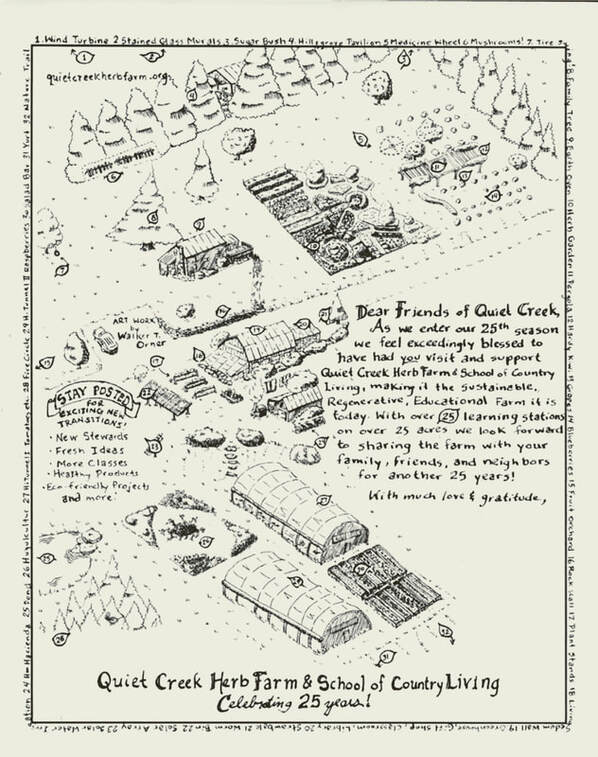There are hundreds of misplaced plants growing at Quiet Creek that have been under utilized. Based upon the book, we now are broadening our horizons of wild treats to include spruce pitch chewing gum and wild ginger root candy.
Many roots, nuts, tubers, bark, and pollen yield many delicacies. We’ve been a big fan of elder flower fritters for years, but now we’re eager to try black locust flowers. In addition, young pickled marshmallow flowers sound like an appetizing substitute for capers.
Using various plant species has many benefits. It is a free source of locally-grown, organic food and medicine which mentally and physically empowers the collector. For example, our boys gain a huge sense of freedom and self-reliance knowing the plants they harvest will nourish and cure them.
Lee Peterson, the author of this field guide and the son of Roger Tory Peterson, shares that foraging for wild edibles will give a feel of natural cycles and the flow of energy. Searching for wild food increases our awareness of the climatic seasons and how plants store their nutrients. In spring and summer a wild crafter searches for leafy shoots for green salads and in the fall -- seeds, fruits, and nuts. The best time to harvest plant roots is after a heavy frost.
If we are willing to try something new, there are treats to be had from the wild. It is exciting to explore these free gifts from God, especially with young students. So grab a reliable field guide, step outside the (cereal) box, and discover the delectable delights for an outdoor dining experience.
 RSS Feed
RSS Feed
